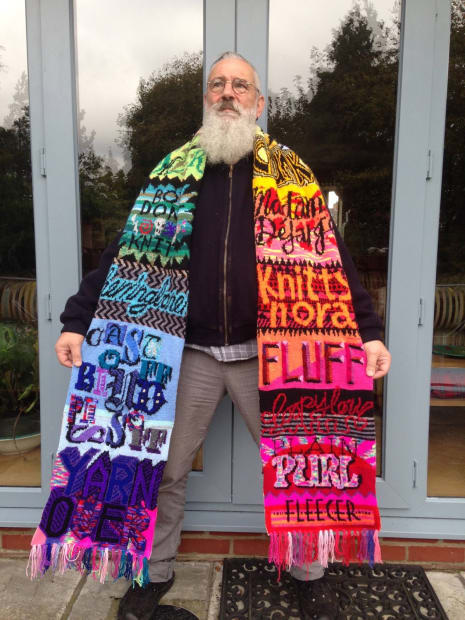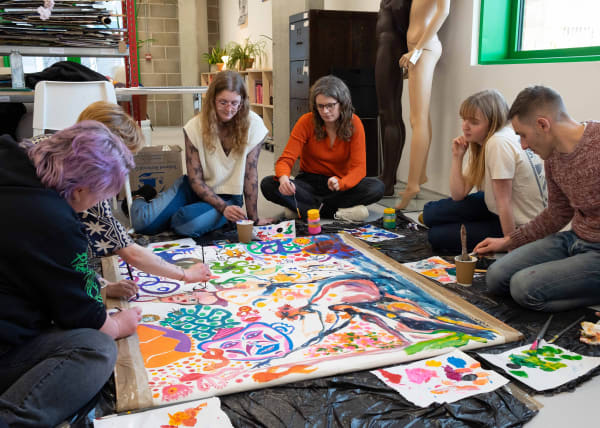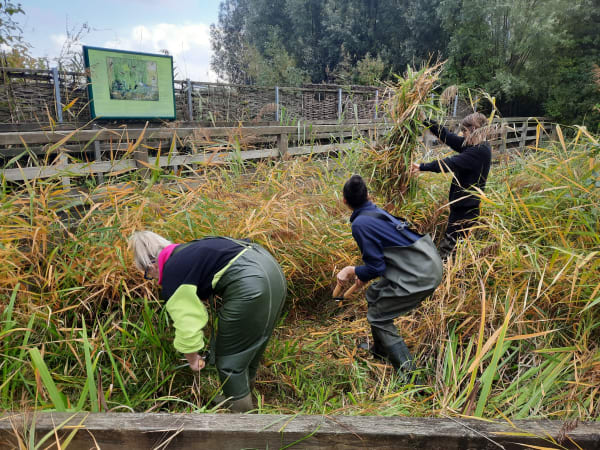-
I began by focussing on understanding what, or who, constituted QUEERCIRCLE’s communities. I wanted to know whether this meant a specific kind of community – something that specifically these people could gain, something that specific communities were potentially making together. Perhaps there was actually nothing specific at all about who was accessing QUEERCIRCLE activities – in which case the wider research in the area of socially engaged arts, creative health would already give us the answer to the research question (see the APPG[1], WHO reports[2], The Lancet[3]). So can we (or how can we) identify a QUEERCIRCLE community specifically?
This thread of enquiry was extremely slippery. What exactly QUEERCIRCLE is, beyond a building? Who sees the QUEERCIRCLE as their space (“would I belong at there? Is QUEERCIRCLE for me?” “why is QUEERCIRCLE the place for me?”). Which kinds of audiences or participant groups might access QUEERCIRCLE’S offer?
The thread questioned whether people spending time at QUEERCIRCLE had anything in common (identity related or not) that would bind them as a recognisable or specific community, even simply having similar expectations or perceptions of the QUEERCIRLCE space and the offer. Had a unique kind of community or space (or community space) been emerging since QUEERCIRCLE opened three years ago? A cohort specific to QUEERCIRCLE, generated by what people think QUEERCIRCLE is, rather than QUEERCIRCLE serving specific existing communities?
A line began to settle through the weaving of discussions. To begin with, QUEERCIRCLE sets a frame in its self-description, describing itself is an intentionally open space, one that is clearly and openly queer-led: a new LGBTQ+ led charity “working at the intersection of arts, health and social action”, who “recognise that ‘queer’ stands for rejecting specific labels of romantic, sexual and/or gender identity, and that this rejection of stable identity categories is inherently political.” “To be queer means to resist heteronormative and homonormative ways of relating and being.”
So – a queer-led, inclusive space, with those accessing QUEERCIRCLE activities being anyone who feels this space is for them. Whoever comes – this is the QUEERCIRCLE community. (Though this leaves the research question rather lost, without boundaries to make sense of what’s being explored.)
Building on this open base, contributors offered many insightful observations and ideas on the possible contributions of identities to what was happening in the making spaces, and ways of articulating what QUEERCIRCLE offers – for example as researcher Shakthi Nataraj wondered:
“Maybe queerness (in the way QUEERCIRCLE uses the term) is more like a cultural practice, a subcultural or countercultural catch-all” - Shakthi
Certainly identities couldn’t be discounted as a recurrent theme. Numerous conversations during making activities touched on queer experiences, and “...obviously this wouldn’t have been a conversation I could have in a different kind of space.” - Anni
“I think identity is hugely ingrained in what people are getting from these workshops – opening of identity... something about vulnerability and opening of identity (as an idea) – these practices open you up in a vulnerable sense, so that you may become more malleable towards other people’s identities” - George
Powerful ‘other outcomes’ emerged for some participants from workshops explicitly handling queer lived experience. These included affirmation and validation, visibility, personal reflection and reframing of damaging or painful experiences through working them into the making process. Literally, the creative work people were making bore the story of their marginalised identity, their lived stories were woven through their crafted artworks. And the creative making processes led by some artist facilitators created spaces and conversations where identities were central.
-

-
While in some workshops queer experiences were an explicit theme, in others the potential identity connectivity between people in the session was tacit. My reflections noted that “the sense of shared / embraced identity felt quite strong, but might have been quite flawed!” I worried about the fragility of an automatic trust based on assumptions about values or lived experience shared in common, and what might happen between people if realities surfaced which might confront these assumptions.
As it was, in these less explicitly themed workshops, where participants’ expectations of some others’ lived experience might have been quite at odds with reality, there seemed to be no harm done by simply avoiding the subject of identities and shared experience. As David suggested: “QUEERCIRCLE is perfect for people who look on themselves a different – so that’s a complete barrier that’s been kicked over...”
The bonds between participants were brief, and choosing to share the same QUEERCIRCLE space to focus on creative making was apparently enough to build the sense of a temporary collective in these sessions – deftly handled by the artist facilitators.
On the question of what role QUEERCIRCLE participants’ identities play in what else may be made through making, this theme suggests that a rare kind of malleable collective with unusual properties is one answer. Through the creative making workshops, a specific, time-bound, definition-resistant collective (or collective of resistance) is formed, both because of and irrespective of people’s identities. This temporary network of participant bonds (both fragile and strong, much like a spider’s woven thread) provides at the very least social connections, as any Creative Health research will echo. But specifically created in these collectives is also affirmation, validation, visibility, and the chance to explore and express some tightly held personal experiences of marginalisation, in a space where difference and resistance to oppressions is the norm. -
[1] All-Party Parliamentary Group on Arts, Health and Wellbeing Inquiry Report (2017) Creative Health: The Arts for Health and Wellbeing; Raw, A. (2013) 'A model and theory of community-based arts and health practice'
[2] WHO (2019) Regional Office for Europe: Health Evidence Network Synthesis Report 67 ‘What is the evidence on the role of the arts in improving health and well-being?’ Daisy Fancourt, Saoirse Finn
[3] The Jameel Arts & Health Lab in collaboration with the WHO–Lancet Global Series on the Health Benefits of the Arts, Sajnani, Nisha et al. The Lancet, Volume 402, Issue 10414, 1732 - 1734




